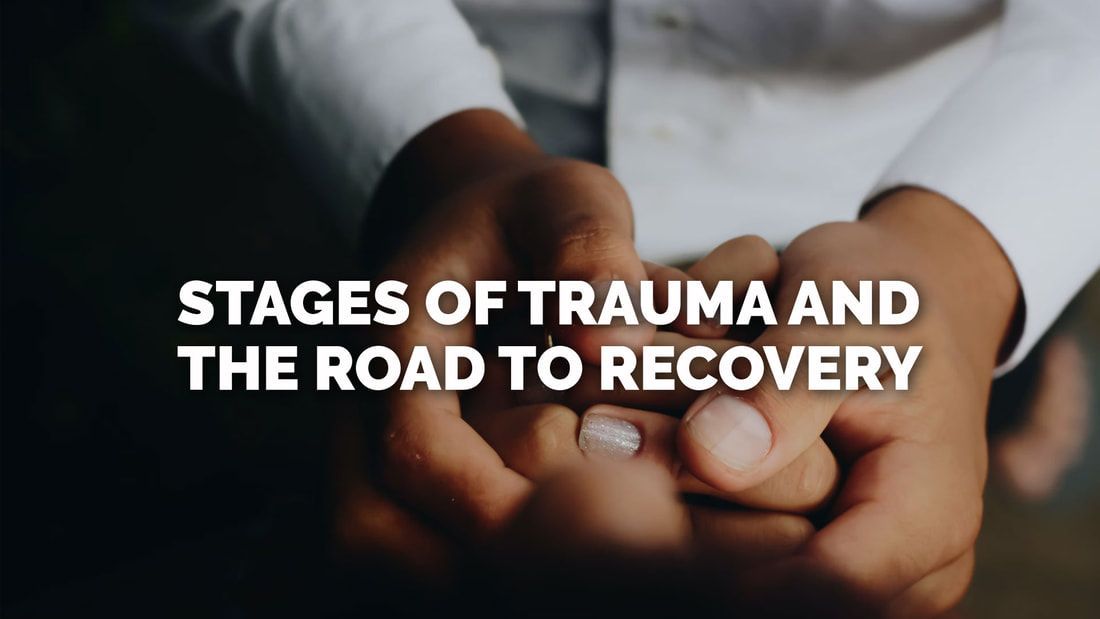|
Acknowledging the stages of trauma is essential in the road to healing and recovery.
Before we discuss the different stages of trauma, let us first know the different types of trauma or abuse that exist in today’s society. Different trauma types have specific nature in their stages as well as their journey towards healing. Trauma Types Bullying Bullying is defined as repeated unwanted aggressive behavior against a person and their reputation. It is one of the most rampant forms of abuse and common in schools, workplaces, and communities. It comes in the form of verbal, physical, and emotional torment. Sexual Abuse This comes in the form of sexual harassment, molestation, unwanted sexual aggression, and rape. Although most victims are women, sexual abuse cases have been known to happen towards men and members of the LGBTQ community. Physical Abuse Physical abuse is defined as any deliberate act causing injury or trauma to another person or animal through bodily contact. It is important to note that physical abuse is different from violent trauma. The latter can happen with intentional harm. Violent trauma is common among soldiers, prisoners of war, and those caught in armed conflicts. Disasters and calamities can also cause violent trauma. Childhood Trauma Childhood trauma comes in many forms, but the common denominator is the period. Childhood traumatic experiences and abuse that occur to children aged 0 to six years old. Traumatic Grief Death or tragic loss of a loved one can be a cause for trauma. Sudden death, fatal accidents, and the unexpected departure of someone close can cause depression, anxiety, and perpetual pain. Complex Trauma Complex trauma is defined as multiple trauma usually occurring due to repeated trauma experienced by the victim. According to blueknot.org.au, “Complex trauma is not always the result of childhood trauma. It can also occur as a result of adults’ experience of violence in the home, family, neighborhood, and workplace. It can be physical, sexual, emotional, verbal, financial, or spiritual. Other causes are violence in the community such as civil unrest, war trauma or genocide, refugee and asylum seeker trauma, sexual exploitation and trafficking, extreme medical trauma and repeated deployments such as for emergency personnel, armed forces.” W.Lisare is an author who wrote a memoir about her life journey overcoming multiple traumas. The Other Side of Fear: My Journey Into Perfect Love by Lisare details how she endured an unhappy childhood, financial losses, the death of a grandchild, divorce, and cancer. This can also be classified as complex trauma. The fact that W. Veronica Lisare overcame these traumatic events in her life is proof that trauma can heal. Domestic Trauma Also referred to as Intimate Partner Violence (IPV), Domestic Trauma or domestic violence happens when an individual purposely causes harm or threatens the risk of harm to any past or current partner or spouse. Trauma Stages GoodTherapy identifies four stages of trauma recovery. They are Silence, Victimhood, Survivorhood, and Thriving and Transcendence. Silence The first stage is characterized by refusing to discuss what transpired and the need to be alone or disconnect from the world. There are many factors for this “time of silence.” It can be guilt, shock, shame, stigma, or denial. Depending on the trauma or abuse, the period for silence can be brief or prolonged. Victimhood As time passes, the victim recognizes the situation and seeks to go back to their routine. However, because of the experience, victims are torn between ‘a need to be safe and protect emotions and a need to grow and confront the traumatic memories.’ Thus, they begin to explore and perhaps open themselves to trusted people and acknowledge that they are victims of trauma or abuse. Survivorhood It may take some time before victims can reach the stage of survivorhood. This can only happen once the victim has processed the trauma or abuse, understands why it happened, and finally gathers the needed strength, courage, and support to move forward. The journey towards healing and recovery is not linear, and reaching the survivorhood stage is crucial. By this time, there is a sense of acceptance, and victims feel less and less wounded. Thriving and Transcendence This is the stage where victims find meaning and perhaps a pleasant transformation from the trauma or abuse they have suffered in the past. Going back to W. Veronica Lisare, being able to write a book about your trauma and other adversities is no easy feat. What she has done and how she inspires others is a perfect example of thriving and transcendence. Of course, there are many forms of thriving after a trauma, and what matters most is that the victims can heal and remind other victims that there is always hope, that there is light at the end of the tunnel.
0 Comments
Leave a Reply. |

 RSS Feed
RSS Feed
